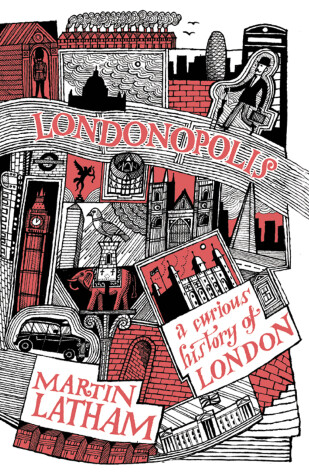Reviewed by pamela on
The draw of this book was its subtitle: A Curious History of London. It makes it sound like the reader will be treated to some little known stories about the city and its inhabitants. Instead, we are treated to a bland retelling of some of London's more general history. There are glimpses of fascinating stories, but many of them are not further developed, or given a proper context for the reader to engage with.
Latham draws you in with a catchy blurb. “Which tube station once housed the Elgin Marbles? What lies behind a Piccadilly doorway that helped Darwin launch his theory of evolution? And who named the Natural History Museum's long-tailed dinosaur Mr. Whippy?” With a draw like that, who wouldn't want to pick up this book? The Elgin Marbles gets a short paragraph about wartime London, the section on Darwin is admittedly one of the most interesting parts of this book, but the door is nowhere near as mysterious as it sounds and is in fact a mundane part of history. I worked at the Natural History Museum until recently, and I'd never, ever heard the Dinosaur in the great hall named Mr. Whippy. So I thought maybe Latham knew something I didn't. I skipped straight to that page with anticipation only to find one sentence in the introduction to its section stating “We all love the huge blue whale model, and the long-tailed dinosaur dominating the entrance hall – which is affectionately called Mr Whippy (or similar).” That was it. So, for all that Latham told me I'm simply under the impression that he's just got it wrong. The Dinosaur in the great hall with the long tail is called Dippy...because he's a Diplodocus (I'd also like to note that I even checked with three of my former colleagues to find out whether any of them had ever heard him called 'Mr Whippy'. The answer was a resounding no). So either he's actually privy to some information that I was not and found it unnecessary to share or he was just plain wrong. I'd like to think it was the former, however that is something that this book suffers from all the way through. It throws interesting information at you, and then fails to follow through with any context or explanation, instead choosing to focus on the mundane aspects of London history.
One of my other bugbears came at the end of this book, where Latham starts speaking about his own family history. I can understand writing of your father with reverence, but it is unfitting for an academic to describe Dowsing as anything other that pseudo-science, with very little basis in reality. Latham instead writes longer than any other section of his book about his father's abilities as a Dowser and how he was accurate and talented and his brother also shares the 'talent'. Many studies have been done in to Dowsing and those who claim to have a 'talent' for finding water, however none have been proven to have any more accuracy than sheer chance. Dowsing has a fascinating history, and it's a really interesting topic, but it shouldn't be represented as reality by a serious academic.
This book wasn't all bad, there were some genuinely interesting parts. I especially enjoyed the sections on Darwin and Eleanor Marx. However, my overall impression was of a book that was underdeveloped, wrongly represented, and not all that interesting. There are so many fascinating stories in London, like the Café Nero on Great Tower Street heading away from Monument Station toward the Tower of London with a little statue of a mouse on it with a fascinating back story, or the horrible and ethically debated history of the Skeleton of Charles Byrne the 'Irish Giant' which is contentiously still on display at the Hunterian Museum, or even the incomparable Dennis Severs' House which acts as a 'still life' time capsule created by its eccentric owner for any who walk through its doors and wish to be transported.
This book managed to be interesting because its subject matter was interesting. But in more capable hands it could have been much, much more.
Reading updates
- Started reading
- 25 November, 2014: Finished reading
- 25 November, 2014: Reviewed
